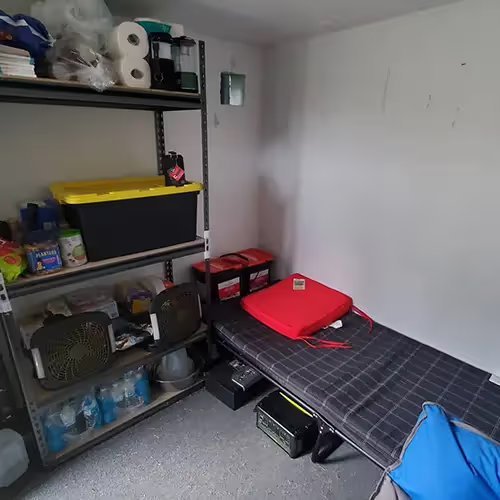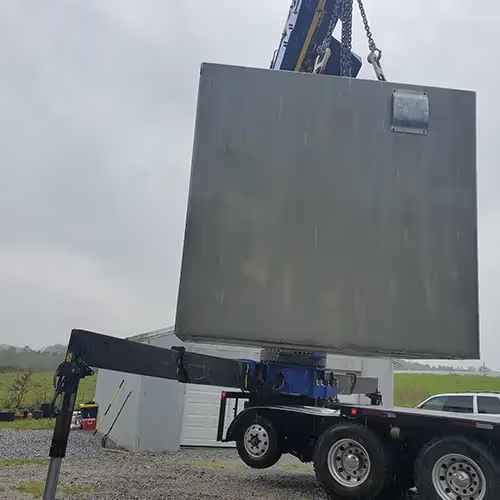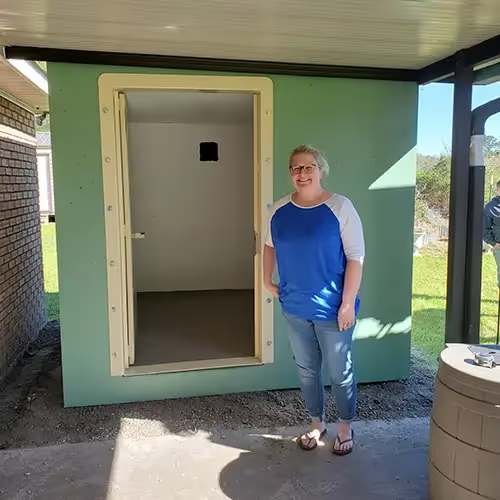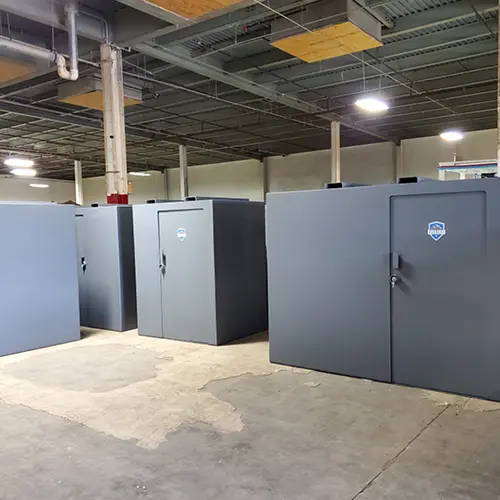Stocking Your Storm Cellar: 10 Essential Supplies You’ll Need


Have you ever wondered what you’d really need if a sudden storm forced you into your shelter for several days? It’s not just about having a safe space—it’s about stocking it with storm shelter essentials that keep your family secure, comfortable, and ready for unexpected situations. Building a strong emergency preparedness kit is essential because severe weather can strike with little warning, and having the right supplies ensures you can stay safe without panic. Stocking a storm cellar may feel overwhelming at first, but with organized home disaster planning, you can transform it into a reliable lifeline. For DIY enthusiasts, DIY storm cellar plans provide practical guidance on setting up your space efficiently.
Think of it as packing for a critical trip, but this one is about survival. Having tornado survival supplies, water storage solutions, non-perishable food items, a first aid kit checklist, flashlights and batteries, and emergency communication tools ensures that every basic need is covered. You’ll also want to include items like portable power generators, weather alert devices, and survival blankets, so your shelter is both functional and comfortable. When you have everything properly arranged, stress decreases, confidence rises, and you’re prepared to face even the most intense storms. For professional assistance, reliable storm cellar services can help ensure your shelter is up to code.
Stocking the right items also gives you peace of mind, knowing that your family won’t have to scramble during emergencies. Even small additions, like hand-crank radios, personal hygiene supplies, or emergency cooking equipment, make a significant difference. Proper storm cellar organization ensures every item is easy to access when you need it most, while multi-tool essentials and protective clothing gear cover safety and practical use. By planning carefully, your storm shelter becomes more than a storage space—it becomes a dependable, well-stocked refuge for you and your loved ones.
A Brief History of Storm Shelters
Storm shelters have a long history of protecting families in regions prone to severe weather. Originally, simple underground bunkers doubled as storage areas for food preservation techniques, keeping perishables safe while also serving as a refuge during violent storms. Over time, as communities faced increasing tornadoes, hurricanes, and other extreme weather events, shelters evolved into reinforced structures designed to withstand wind, flying debris, and flooding. Modern shelters often include emergency communication tools, portable power generators, and weather alert devices, allowing families to stay informed and connected during emergencies. If you want to understand structural options, concrete storm cellars remain a highly durable choice.
Today, a well-stocked shelter contains survival blankets, a fire extinguisher guide, hand-crank radios, personal hygiene supplies, and emergency cooking equipment. Storm cellar organization ensures these items are easily accessible and stored efficiently. Families can also include long-term storage containers for food and water, emergency water filters, and battery-operated fans to maintain comfort over extended periods. Proper organization ensures that, in high-stress situations, everything is ready at a moment’s notice.
The evolution of shelters reflects changing technology and priorities. Today’s storm cellars are more comfortable, accessible, and designed for longer stays. They not only provide safety but also a sense of security, reassurance, and preparedness. Home disaster planning is critical to equipping shelters with the right mix of tornado survival supplies, emergency preparedness kits, and multi-tool essentials. By understanding this evolution, you can appreciate why every item—whether it’s protective clothing gear, gas masks and filters, or emergency blankets for kids—has a role in ensuring survival, comfort, and peace of mind during severe weather. For guidance on regulations and standards, see storm cellar requirements for homeowners.
Understanding the Essentials of Storm Shelter Preparedness
Stocking a storm cellar isn’t just about tossing in a few bottles of water—it’s about creating a functional space that can meet your family’s needs if cut off from the outside world. To build a truly effective shelter, you need a combination of storm shelter essentials, emergency preparedness kits, and tornado survival supplies. When planned properly, your cellar can provide safety, comfort, and practical solutions during a severe weather event.
Key components include:
- Safety Supplies – Protective clothing gear, safety helmets and gloves, gas masks and filters, and emergency shelter tips ensure everyone is physically protected from hazards like flying debris or contaminated air. You can learn more about storm shelter vs. storm cellar differences to choose the right type.
- Sustenance – Non-perishable food items, emergency water filters, emergency cooking equipment, and long-term storage containers allow for secure nutrition and hydration without frequent trips outside.
- Comfort and Shelter Needs – Survival blankets, emergency blankets for kids, battery-operated fans, and flashlight lantern combos provide warmth, lighting, and comfort, even during long periods of confinement.
- Health and Hygiene – Portable sanitation kits, backup medical supplies, and personal hygiene supplies prevent minor health problems from escalating.
- Communication Tools – Hand-crank radios, weather alert devices, and other emergency communication tools keep your family informed, connected, and able to respond to updates efficiently.
With proper storm cellar organization and the inclusion of multi-tool essentials, your shelter is not just functional—it’s optimized for safety and ease of use. When each item is thoughtfully included, the space becomes a proactive system designed to reduce stress, maintain health, and offer a sense of control. A well-prepared shelter ensures that even in the worst weather, your family can feel secure, supported, and ready to weather the storm effectively.
The Benefits of a Well-Stocked Storm Shelter
A well-stocked storm cellar offers benefits far beyond immediate safety. Preparing in advance transforms fear into confidence, helping families navigate emergencies calmly. Having storm shelter essentials, emergency preparedness kits, and tornado survival supplies ensures that your shelter is equipped for both immediate safety and comfort over extended periods.
Key benefits include:
- Peace of Mind – Confidence knowing your shelter has the necessary items like survival blankets, flashlight lantern combos, and emergency communication tools for any situation.
- Improved Safety – First aid kit checklist, protective clothing gear, and hand-crank radios reduce the likelihood of minor injuries escalating into serious problems.
- Comfort During Stressful Times – Items such as emergency cooking equipment, battery-operated fans, and emergency blankets for kids create a sense of normalcy and ease.
- Self-Reliance – With portable power generators and alternative energy sources, families can rely less on external aid, especially when roads are blocked or power is out.
- Faster Recovery – Proper food preservation techniques, disaster-proof documentation, and long-term storage containers shorten recovery times once the storm passes.
Even small comforts, like a multi-tool essentials kit or personal hygiene supplies, can reduce stress and maintain morale. A well-prepared storm shelter transforms a potentially chaotic situation into a manageable experience. Families with emergency water filters, portable sanitation kits, and protective clothing gear can handle extended stays confidently, maintaining safety, health, and mental well-being. Investing in storm cellar organization and planning ensures your shelter functions optimally, making severe weather less intimidating and providing reassurance for everyone inside.
The Challenges of Stocking a Storm Shelter
Even the most well-intentioned preparedness plans face challenges, and stocking a storm cellar is no exception. While having storm shelter essentials, emergency preparedness kits, and tornado survival supplies is critical, obstacles like cost, space, and maintenance can make the process feel overwhelming. Recognizing these challenges helps families plan realistically and avoid unnecessary stress while gradually building a fully functional shelter.
Common challenges include:
- Upfront Costs – Acquiring water storage solutions, portable power generators, emergency cooking equipment, and long-term storage containers can be expensive, especially for larger families.
- Storage Limitations – Not all shelters are spacious, so storm cellar organization and prioritizing compact items like compact cooking stoves or multi-tool essentials become essential.
- Shelf Life and Expiration – Regularly rotating non-perishable food items, flashlights and batteries, and emergency blankets for kids ensures supplies remain safe and usable.
- Forgetfulness Under Stress – In emergencies, it’s easy to overlook items like backup medical supplies, personal hygiene supplies, or emergency water filters, highlighting the importance of home safety checklists.
- Maintenance Fatigue – Storm cellar maintenance, seasonal inventory checks, and proper food preservation techniques require commitment but prevent last-minute crises.
Strategies to ease the process include building gradually, checking expiration dates systematically, and using portable sanitation kits and protective clothing gear to maximize readiness without clutter. Families can create a rotation system that integrates daily use and storage, ensuring emergency shelter tips are followed without stress. By viewing preparedness as a long-term habit rather than a one-time task, obstacles shrink, and confidence grows. Even small, consistent steps—like adding battery-operated fans, survival blankets, or hand-crank radios—build a functional, organized, and secure shelter that can handle any storm scenario.
How to Stock Your Storm Shelter with Confidence
Building a fully stocked storm cellar requires intentional planning and a step-by-step approach. Having storm shelter essentials, emergency preparedness kits, and tornado survival supplies is crucial, but knowing how to organize and maintain these items is equally important. A properly prepared shelter can ensure your family’s safety, comfort, and peace of mind during severe weather, while a poorly stocked one can add stress and uncertainty.
Steps to start:
- Start with the Basics – Include water storage solutions, non-perishable food items, flashlights and batteries, and a first aid kit checklist. These provide hydration, nutrition, illumination, and immediate medical readiness.
- Add Comfort and Safety – Incorporate survival blankets, emergency blankets for kids, protective clothing gear, and personal hygiene supplies. Comfort helps maintain morale during extended stays.
- Cover Communication Needs – Equip your shelter with hand-crank radios, weather alert devices, and other emergency communication tools to stay informed of weather updates and potential dangers.
- Think Long-Term – Add backup medical supplies, multi-tool essentials, portable power generators, and alternative energy sources for extended emergencies or power outages.
- Review and Refresh – Maintain storm cellar maintenance routines and regularly update home safety checklists, ensuring items like emergency water filters and long-term storage containers are functional.
Additional tips: involve your family in storm cellar organization, label supplies clearly, and rotate non-perishable food items or flashlight lantern combos seasonally. By building gradually and maintaining the shelter, you create a reliable refuge that meets safety, health, and comfort needs. Even minor improvements—like adding emergency cooking equipment or battery-operated fans—significantly enhance usability. With this approach, your storm cellar becomes not just a storage area, but a thoughtfully equipped space designed to safeguard your family during any emergency.
The Future of Storm Shelter Preparedness
As severe weather becomes more unpredictable, storm shelters are evolving. Modern shelters combine traditional safety with innovative tools, making storm shelter essentials and emergency preparedness kits more effective than ever. Communities are prioritizing home disaster planning, while technology enables smarter, safer, and more comfortable shelters. Families can now integrate alternative energy sources, portable power generators, and compact cooking stoves to maintain power and sustenance during extended outages.
Key trends shaping future preparedness include:
- Smart Technology Integration – Shelters may have solar panels, Wi-Fi, or satellite connectivity paired with weather alert devices and emergency communication tools for real-time updates.
- Compact, Multi-Use Supplies – Lightweight multi-tool essentials, battery-operated fans, and space-saving long-term storage containers reduce clutter and improve accessibility.
- Sustainable Materials – Environmentally friendly designs support long-term storage for non-perishable food items, emergency water filters, and other essentials.
- Community-Based Shelters – Neighborhoods may invest in shared spaces equipped with storm cellar organization, survival blankets, and portable sanitation kits.
- Mental Health Awareness – Focus on comfort, stress relief, and entertainment items, including survival guide books, emergency blankets for kids, and games to keep morale high.
Forward-looking shelters combine protection with preparedness, allowing families to proactively respond rather than simply react. Incorporating emergency cooking equipment, hand-crank radios, and personal hygiene supplies ensures comprehensive readiness. With thoughtful planning, each shelter can serve as a hub of safety, efficiency, and comfort. By anticipating future needs, families can strengthen resilience, remain self-reliant, and manage emergencies with confidence. Investing in storm cellar essentials, tornado survival supplies, and backup medical supplies today ensures safety for tomorrow.
Bringing It All Together
Stocking your storm cellar with storm shelter essentials, emergency preparedness kits, and tornado survival supplies is an investment in safety, comfort, and peace of mind. A well-prepared shelter combines practical items, organization, and foresight. Families who include water storage solutions, non-perishable food items, first aid kit checklist, flashlights and batteries, and emergency communication tools reduce panic during severe weather. Proper storm cellar organization ensures every item, from multi-tool essentials to emergency blankets for kids, is easily accessible.
Key takeaways:
- Preparation is a process – Start small, gradually add items, and focus on essentials that fit your family’s unique needs.
- A well-stocked shelter goes beyond survival – Comfort, reassurance, and functional equipment, such as survival blankets, battery-operated fans, emergency cooking equipment, and portable power generators, make extended stays manageable.
- Challenges are manageable – Use home safety checklists, rotate non-perishable food items, and maintain storm cellar maintenance schedules.
- Peace of mind matters – Knowing you have protective clothing gear, safety helmets and gloves, and emergency water filters available provides security and confidence.
By combining emergency shelter tips, food preservation techniques, and alternative energy sources, your shelter becomes a proactive safety hub. Even small additions, like hand-crank radios, portable sanitation kits, or compact cooking stoves, significantly improve usability. Preparing thoughtfully transforms fear into reassurance, helping families navigate storms safely and comfortably.
Final Thoughts and Next Steps
Preparedness is about more than items—it’s about ensuring your family’s safety, comfort, and confidence during a crisis. Stocking your storm cellar with storm shelter essentials, tornado survival supplies, emergency preparedness kits, and water storage solutions demonstrates care and foresight. Begin small: rotate non-perishable food items, check flashlights and batteries, and add items like emergency cooking equipment, survival gear for families, and emergency blankets for kids.
Next steps:
- Explore home disaster planning tools and checklists to refine your strategy.
- Involve your family in storm cellar organization, ensuring everyone knows where essentials like hand-crank radios, emergency water filters, and long-term storage containers are stored.
- Stay updated on evacuation planning tips and community resources.
- Gradually incorporate backup medical supplies, portable power generators, and compact cooking stoves.
- Rotate survival blankets, emergency blankets for kids, and portable sanitation kits seasonally.
Preparedness builds confidence, turning a potentially stressful situation into a manageable one. A thoughtfully stocked shelter—complete with multi-tool essentials, protective clothing gear, personal hygiene supplies, and food preservation techniques—provides peace of mind and resilience. Each step forward strengthens your ability to face storms safely and comfortably. Your storm shelter is more than a safe space—it’s a proactive strategy for survival, comfort, and long-term security.




